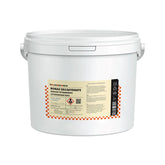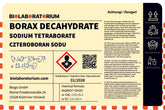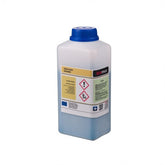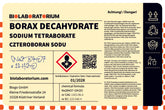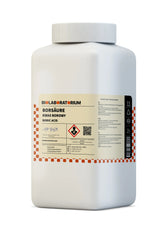Mannitol – The versatile sugar alcohol with fascinating properties
Mannitol, a sugar alcohol with six carbon atoms, is a fascinating molecule with a variety of interesting physicochemical properties. In the laboratory world and in various industries, this substance finds diverse applications. In this blog post, we will take an in-depth look at mannitol and its special characteristics.
The Molecular Structure of Mannitol
Mannitol belongs to the group of polyols, also known as sugar alcohols. These compounds are characterized by the presence of multiple hydroxyl groups (-OH) attached to carbon atoms. In the case of mannitol, there are six such hydroxyl groups, arranged symmetrically around a carbon chain.
The chemical formula of mannitol is C₆H₁₄O₆. This molecule exhibits an interesting property – it exists in several stereoisomeric forms. Stereoisomerism means that molecules can have the same chemical formula but different spatial arrangements of atoms. In the case of mannitol, there are a total of eight possible stereoisomers, but only one represents the naturally occurring form.
Physicochemical Properties of Mannitol
Mannitol is a white, crystalline solid that is stable at room temperature. It has a slightly sweet taste and is highly soluble in water. Furthermore, mannitol is characterized by several other interesting properties:
Melting Point and Crystal Structure
The melting point of mannitol is 166-168°C. This molecule crystallizes in a monoclinic crystal structure, meaning the crystals have an asymmetric arrangement of atoms.
Optical Activity
Mannitol is an optically active molecule. This means that it is capable of rotating the plane of polarized light. The naturally occurring form of mannitol is dextrorotatory, i.e., [α]D20 = +19.7°.
Hygroscopicity
Mannitol is only slightly hygroscopic, meaning it hardly attracts water. This is an important advantage in applications where moisture must be avoided.
Thermal Stability
Mannitol is characterized by high thermal stability. It decomposes only at temperatures above 200°C, making it suitable for many applications.
Occurrence and Production of Mannitol
Mannitol occurs naturally in various plants, particularly in fungi, algae, and some fruits like olives, apples, and pears. In nature, it serves organisms as a storage substance and osmoregulator.
For industrial purposes, however, mannitol is mostly produced synthetically. For this, glucose is first obtained from starch, which is then catalytically hydrogenated to mannitol. This process can be carried out either through heterogeneous catalysis with nickel or through enzymatic catalysis with microorganisms.
Applications of Mannitol
Due to its diverse properties, mannitol is used in numerous areas. Some important application areas are:
Pharmaceutical Industry
In the pharmaceutical industry, mannitol is used as a filler, binder, and taste corrector in tablets, capsules, and injection solutions. It is also used as a diuretic to treat edema and to reduce intraocular pressure.
Food Industry
In the food industry, mannitol serves as a sugar substitute, humectant, and stabilizer. It is used in confectionery, baked goods, beverages, and dietary supplements.
Cosmetics
Mannitol is also used in the cosmetics industry, for example as a humectant in creams, lotions, and shampoos.
Organic Synthesis
In organic synthesis, mannitol is used as a starting material for the production of various chemical compounds. Examples include the synthesis of sorbitol, mannose, or ascorbic acid.
Laboratory Applications
In the laboratory, mannitol is used in various ways due to its properties, such as a buffer solution, cryoprotectant, or stabilizer for enzymes and proteins.
Conclusion
Mannitol is a fascinating molecule with a variety of interesting properties. From melting point to optical activity to thermal stability, this sugar alcohol offers many advantages for numerous applications in industry and research. Whether in pharmaceuticals, food processing, or organic synthesis – mannitol is a versatile and valuable substance that can demonstrate its strengths in many areas.

